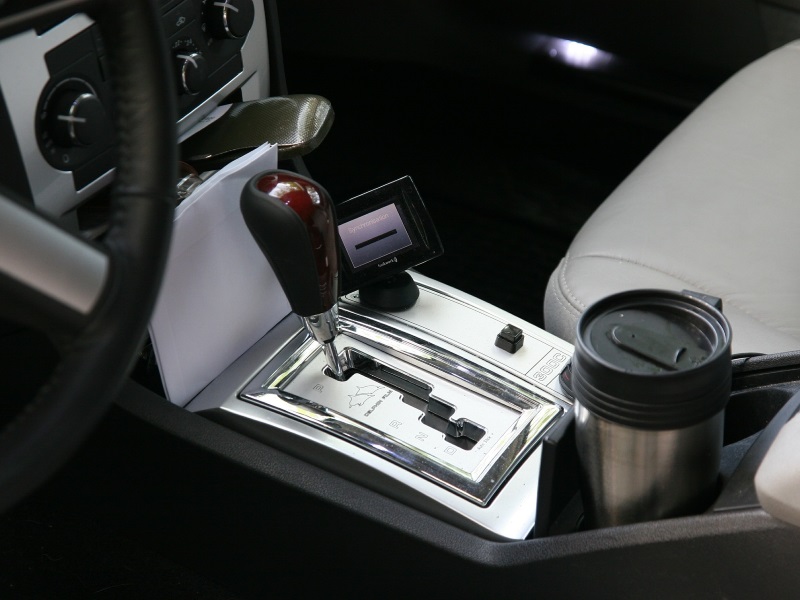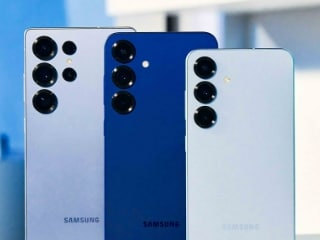- Home
- Others
- Others Features
- Read While Commuting? Self Driving Cars Have You Covered
Read While Commuting? Self-Driving Cars Have You Covered

Ever dreamt of kicking back, letting go of the wheel and reading the paper on the commute to work? In large cities, that could soon be a reality, say auto manufacturers.
Semi-autonomous cars have already hit the road, capable of gauging distance, accelerating and breaking automatically, and rectifying the situation if, say, a distracted driver approaches another car too quickly.
Los Angeles Mayor Eric Garcetti got behind the wheel of one such vehicle, a Volvo XC90, as he kicked off a connected car exhibition at this week's Los Angeles auto show.
"I think that 20 years from now it's going to be the norm," he said in a segment broadcast on television network ABC.
The vehicles are meant to help out "in case of commute and congestion," when drivers are most frustrated, Marcus Rothoff, Volvo's autonomous driving program director told AFP.
Automakers are now focused on the next generation of smart vehicles: the fully autonomous car, which would allow drivers to read, watch a movie, or even send emails.
Such vehicles are a dream for residents of large cities like Los Angeles, the capital of US traffic jams, where drivers frequently spend two hours a day on the road.
"We plan to put 100 autonomous cars in consumer hands by the end of 2017," Lex Kerssemakers, head of American operations for the Swedish automaker said Wednesday in Los Angeles.
Who will be responsible?
Manufacturers worldwide are racing to capture the huge market potential. Japan's Nissan has said it wants to put a self-driving vehicle on Japanese highways by 2016. Honda and Toyota are targeting 2020.
The driver will simply enter a destination and the navigation system, sensors and software will do the rest.
Already Internet giant Google is testing prototypes in its Silicon Valley stronghold.
And US auto giant General Motors and Tesla are working on their own versions. Tesla has already equipped its latest cars with software that allows them to parallel park automatically.
Volvo on Wednesday in Los Angeles unveiled a prototype of the interior of its self-driving cars. Once on autopilot, the driver's seat reclines and a screen on the passenger side offers movies and the Internet.
"Within this decade the technology can be available," said Jessica Caldwell, an analyst at Edmunds.com.
"The key question is the responsibility: What happens if the car hits a school bus or kills its driver?
These questions will take more time," Caldwell said, even though the vehicles have a much faster reaction time "than for a human."
Rothoff said drivers must "trust the system because if you don't trust it you cannot use this (spare) time in a good way" for other activities like reading.
The objective is for the technology to be so reliable that the manufacturer can tell customers that they won't be responsible for any accidents while on autopilot, he said.
Get your daily dose of tech news, reviews, and insights, in under 80 characters on Gadgets 360 Turbo. Connect with fellow tech lovers on our Forum. Follow us on X, Facebook, WhatsApp, Threads and Google News for instant updates. Catch all the action on our YouTube channel.
Related Stories
- Samsung Galaxy Unpacked 2025
- ChatGPT
- Redmi Note 14 Pro+
- iPhone 16
- Apple Vision Pro
- Oneplus 12
- OnePlus Nord CE 3 Lite 5G
- iPhone 13
- Xiaomi 14 Pro
- Oppo Find N3
- Tecno Spark Go (2023)
- Realme V30
- Best Phones Under 25000
- Samsung Galaxy S24 Series
- Cryptocurrency
- iQoo 12
- Samsung Galaxy S24 Ultra
- Giottus
- Samsung Galaxy Z Flip 5
- Apple 'Scary Fast'
- Housefull 5
- GoPro Hero 12 Black Review
- Invincible Season 2
- JioGlass
- HD Ready TV
- Laptop Under 50000
- Smartwatch Under 10000
- Latest Mobile Phones
- Compare Phones
- Realme P4x 5G
- OnePlus Ace 6T
- OPPO A6x 5G
- Samsung Galaxy Z TriFold
- Poco F8 Ultra
- Poco F8 Pro
- Huawei Mate 80 RS Master Edition
- Huawei Mate 80 Pro Max
- Asus ProArt P16
- MacBook Pro 14-inch (M5, 2025)
- Poco Pad M1
- Poco Pad X1
- Just Corseca Skywatch Pro
- Honor Watch X5
- Acerpure Nitro Z Series 100-inch QLED TV
- Samsung 43 Inch LED Ultra HD (4K) Smart TV (UA43UE81AFULXL)
- Asus ROG Ally
- Nintendo Switch Lite
- Haier 1.6 Ton 5 Star Inverter Split AC (HSU19G-MZAID5BN-INV)
- Haier 1.6 Ton 5 Star Inverter Split AC (HSU19G-MZAIM5BN-INV)

















